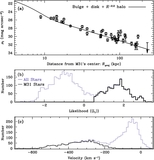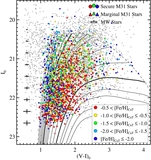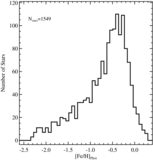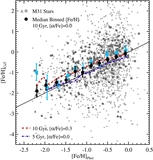Image Details
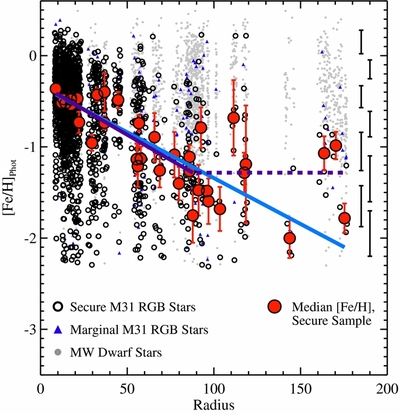
Caption: Figure 9.
Metallicity as a function of radius for our spectroscopic data, using photometric metallicity estimates. Stars are designated as secure M31 RGB stars (black open circles), marginal M31 RGB stars (blue triangles), or MW dwarf stars (secure and marginal, gray dots; Section 2.3). Metallicity is based on comparing the position of the star in the CMD to a grid of isochrones at the distance of M31, and is therefore not physically meaningful for the MW stars. The large red points with error bars denote the median [Fe/H] values and the estimated error in the median for each spectroscopic field, computed using only the securely identified M31 stars. Typical errors in [Fe/H] for individual stars are shown by the error bars on the right. The solid lines show linear least-squares fits to the median field values (Section 4.2); the blue line is fit using the full radial range of the data, while the purple line is fit only to fields within Rproj <90 kpc of M31's center. The purple dashed line shows the median [Fe/H] value for fields at Rproj >90 kpc. It is apparent that the decrease in metallicity with increasing radius seen in the previous figures is due to a continuous gradient in the median metallicity of M31's stellar halo extending to Rproj ![]() 100 kpc.
100 kpc.
Copyright and Terms & Conditions
© 2014. The American Astronomical Society. All rights reserved.



